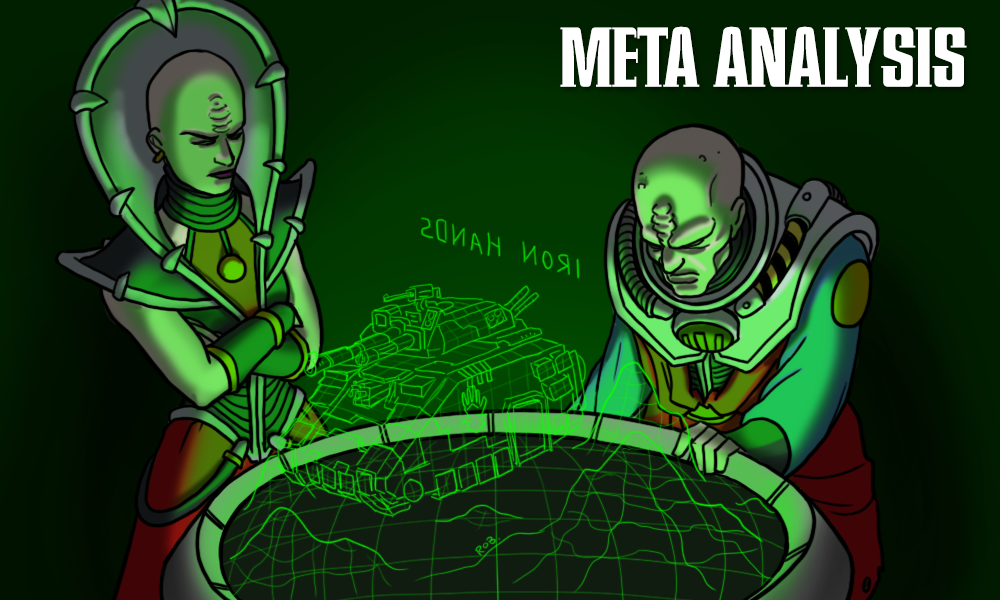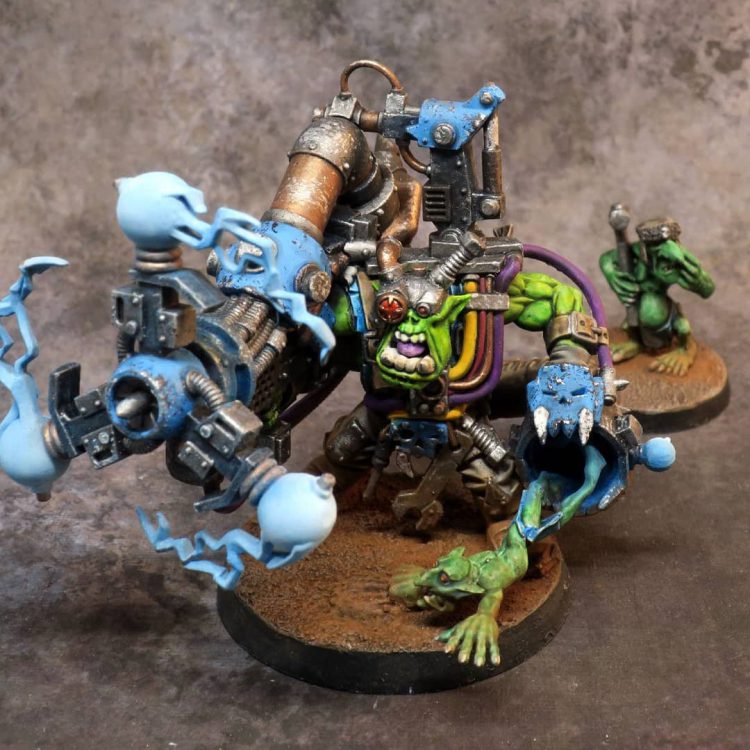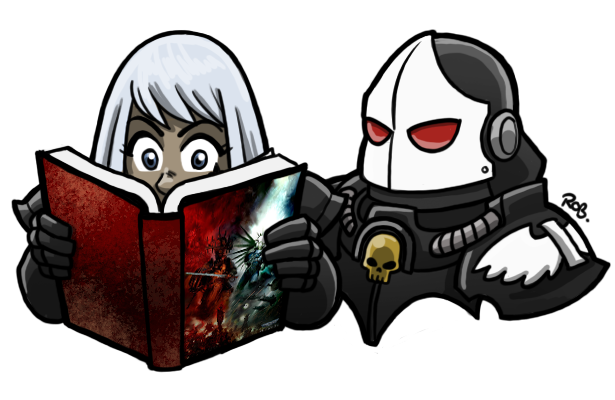What a year it’s been. A horrible, terrible, no good year full of plague. Sorry, you’re meant to start this sort of thing on a positive note. Well.
Competitive Innovations has become one of my favourite parts of working on this site. I put together the format kind of on a whim to look at the results of the first few events in the new edition, but the combination of the positive feedback on the first few pieces and the fun I was having writing it means that it quickly evolved into a regular part of our content schedule, and is something we’ll absolutely be keeping going in the new year (possibly with a few tiny format tweaks to account for the fact that 9th isn’t so new any more).
This article is going to be the last edition of Competitive Innovations for the year, and it’s going to be split into two sections. First up, we’ll be looking at the top four lists from the Queensland Masters, an invitation-only three round event which, as the name might suggest, brought together eight of the best players in Queensland Australia to throw down for the title. Regular readers will recognise several of the names on the roster, and with Australia doing so much to keep the competitive scene alive in the last few months, looking at what happens when the top players down under bring their A-game is a fitting way to end our year of event coverage.
After that, I’ll close out the piece with some key lessons that we’ve learnt over the last five months, helping you consider how to spend any hobby time over Christmas tooling up your army so that you can throw down once vaccines have been widely distributed.
Just before we get into it, I’d like to say a huge thank you to all the readers who have checked in on this column every week, all the TOs and participants who have sent us event tips, and all of the players who unleashed their diabolical creations upon unsuspecting metagames to give me something to write about after each weekend. For those who want to check back on how we got here, we have put together an archive page where you can find links to all of the articles in the series, so check that out if you want to replay some of the old hits. For now, on with the show!
Queensland Masters
All of the lists for this event can be found in Down Under Pairings.
Erik Lathouras’ Adepta Sororitas – 1st Place
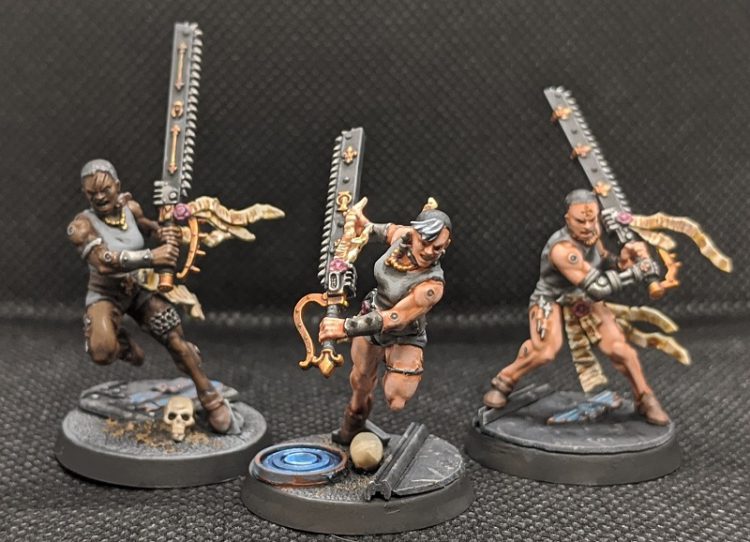
The List
Army List - Click to Expand Brigade Detachment: (The Bloody Rose) HQ: Canoness, Blessed Blade, plasma pistol (65) Canoness, Blessed Blade, plasma pistol (65) Missionary, shotgun, chainsword (45) Troops: Elites: Hospitaller (40) Imagifier (45) 8x Repentia (120) Fast Attack: Heavy Support: Starting CP: 7
Canoness (warlord) Chainsword, plasma pistol, nullrod (65)
– Warlord trait: Righteous Rage
– Relic: Beneficience
– Relic: Blade of Admonition
– Relic: Mantle of Ophelia
– Warlord trait: Beacon of faith
5x battle sisters, chainsword (55)
5x battle sisters, chainsword (55)
5x battle sisters, chainsword (55)
5x battle sisters, chainsword (55)
5x battle sisters, chainsword (55)
5x battle sisters, chainsword (55)
8x Celestians, 1x multi melta, 1x simulacrum, incensor cherub (126)
5x Celestians, 1x multi melta (80)
5x Celestians, 1x multi melta (80)
– Venerated Saint
– Tale of the Warrior + Tale of the Stoic
– Relic: Litanies of Faith
8x Repentia (120)
8x Repentia (120)
5x Dominions (60)
5x Dominions (60)
5x seraphim, 4x Inferno pistols (95)
Mortifier, 2x penitent Flails (60)
Mortifier, 2x penitent Flails (60)
5x retributors, 2x multi melta, 2x cherubs, combi flamer (120)
5x retributors, 2x multi melta, 2x cherubs, combi flamer (120)
5x retributors, 2x multi melta, 2x cherubs, combi flamer (120)
The Standout Features
- Go-wide Bloody Rose Sisters racks up another great finish.
- A surprising absence of Indomitable Belief, instead relying on just flooding the board with power armour.
- Three cheap Canonesses instead of hefiter characters like Celestine.
- The full three Repentia squads back in the list.
Why it’s Interesting in 9th
Erik Lathouras is no stranger to this column, having previously made waves as one of the first players to secure a decent finish with Tyranids in this edition using his gaunt horde list. This time he’s packing a horde of a different kind, drawing on the exceptional power of the Adepta Sororitas codex to pack the board with power armoured punchy sisters, choosing to go with the go-wide Bloody Rose variant that’s seen some recent success.
While the fact that Sisters are excellent shouldn’t be any surprise to regular readers, Erik has kept up his record of shaking up conventional wisdom a bit, and a few of the choices here buck some trends that we’ve seen in other Sisters lists. If you’ve read out updated Start Competing for the Sororitas you might be wondering for example, where Celestine and the indomitable Belief warlord trait are in this list, and it appears that Erik’s (clearly successful) calculation is that their infantry bodies are so efficient on base rate that you can just pack the board with more of them and not worry about bringing the buffs.
Honestly? Seems like a perfectly plausible call when you think about it. While your Sisters will go down faster when being shot at by Plasmaceptors and enemy multi-meltas, because you’ve flooded the table with a whole bunch of MSUs there’s a good chance that an opponent will waste some firepower simply because of accumulated variance when splitting shots between targets. Sisters also have a strong capability to reach out and spike whatever enemy unit can throw down that kind of fire, a role here played by the Retributors. The way those squads are configured really leans in to the cheap, wide and mean strategy the list is going for, taking two multi-meltas and two cherubs instead of four meltas, plus a combi-flamer to turn on Holy Trinity. That cuts the cost of the squads down by a decent chunk without compromising their ability to lay down a devastating first round of shooting. Even better in some ways, it then makes them substantially less attractive as a target after that first volley, forcing your opponent to choose between wasting shots chewing through the spare Sisters or still getting shot at by the multi-meltas for the rest of the game.
The other big spike here is, of course, the Repentia. Many lists have gone down to a couple squads of these, but this list isn’t having any of that and packs the full three. Without a Rhino they could potentially be a little difficult to deploy, as they’re very vulnerable to Counter Offensive if you use two squads in one turn, but I guess one unit aims to start hidden on the board to counterattack any first turn push by the opponent, and two go into Strategic Reserves as hammers for turns two and three. The two squads of Dominions can help to act as bait to make this work, forcing an opponent without ranged threats to come and engage mid-table, but potentially putting themselves at risk of a long-range Advance/auto-charge from the Repentia in the process. The Dominions and sheer number of bodies also mean that this list can spread out to cover a huge amout of the table very quickly, helping to reduce the utility of opponents reinforcement units as well. The two solo Mortifiers slot into one of their standard roles here, sitting at the back to cover space and hold objectives, and looking at the Mantle of Ophelia Canoness I wonder if she joins them, with the 3++ helping to protect her against any enemies that slip through. By sitting at the back, she also potentially opens up more places for the Retributors to come in and benefit from re-rolls, while the two smashier Canonesses rock up the board to join in the fun.
Overall, this list highlights just how powerful and flexible the Sisters codex is right now, as it’s yet another spin on conventional wisdom that still ends up looking incredibly scary. Well done to Erik on the win, and I await with eager anticipation to find out which of our articles he forces us to immediately revise next.
Dan Savage’s Adeptus Mechanicus – 2nd Place
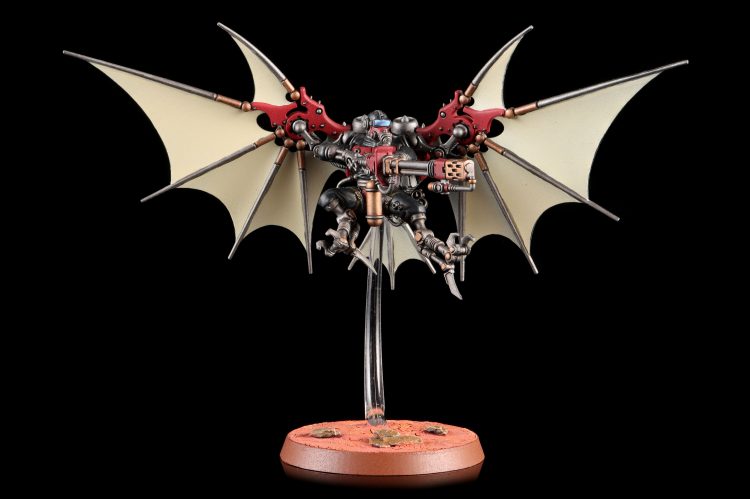
The List
Army List - Click to Expand Detachment 1:Battalion – Warlord Detachment 0CP HQ Manipulus=70 pts Troops Breachers x 5 = 175pts Breachers x 5 = 175 pts Breachers x 5 = 175 pts Breachers x 4 = 140 pts Fast Attack Heavy Support Skorpius Destroyer = 150 pts Detachment 2 : Outrider -3cp HQ Elites Servitors x 4 =68 pts Fast Attack Serberys Raiders x 4 = 64 pts Serberys Raiders x 4 = 64 pts Serberys Raiders x 3 = 48 pts Sulphurhounds x 3 = 68 pts Sulphurhounds x 3 = 68 pts CP 12 -1CP WT, -3CP Detachment 8CP 2000pts
Custom Forgeworld – Magnabond Alloys, Trans-node Power Cores
Warlord Dominus =87 pts
Eradication Ray, Omnissan Axe, Phosphor Serpenta
WT – Learnings of the Genetor
Relic – Raiment of the Technomartyr
Magnarail lance, Mechatendrils, Omnissian Staff
Extra WT- Prime Hermeticon (-1CP)
Breachers x 5 = 175pts
arc rifle, arc claw
arc rifle, arc claw
arc rifle, arc claw
arc rifle, arc claw
arc rifle, arc claw
Pteraxii Sterylizors x 5 = 100 pts
phosphor torch x 4, 5 x Talons, 1 x Flechette Blaster, 1 x Taser Goad
Skorpius Destroyer = 150 pts
Energy Cannon
Energy Cannon
Stygies VIII
Daedalosus = 55 pts
Eradication Pistol, Servo Claw
Servitors x 4 =68 pts
2 x Multi Melta, 2 x Servo-Arm
2 x Multi Melta, 2 x Servo-Arm
Pteraxii Sterylizors x 5 = 100 pts
phosphor torch x 4, 5 x Talons, 1 x Flechette Blaster, 1 x Taser Goad
Galvanic Carbine x 4, Sabres x 4, Archeo-Revolver x 1, Clawed Limbs x 4
Galvanic Carbine x 4, Sabres x 4, Archeo-Revolver x 1, Clawed Limbs x 4
Galvanic Carbine x 3, Sabres x 3, Archeo-Revolver x 1, Clawed Limbs x 3
3 x Clawed Limbs, 3 x Sulphur Breath, 4 x Phospor Pistol, 1 x Power maul, 1 x Blast Pistol
3 x Clawed Limbs, 3 x Sulphur Breath, 4 x Phospor Pistol, 1 x Power maul, 1 x Blast Pistol
The Standout Features
- Dan Savage brings us a reminder of just how scary Kataphron spam can be.
- Just an absolute avalanche of multi-wound models taking advantage of a lack of a Gangbusters equivalent.
- High-speed cavalry provide board control while the Kataphrons get into position.
- Skorpii and Pteraxi cover the backfield shooting and harassment/action roles
Why it’s Interesting in 9th
AdMech are a powerful faction in 9th and came within a hairs breadth of securing a tier 1 slot in our latest tier list revision, missing out by only a single vote from our competitive team. Lists like this are a big part of why – both Breachers and the cavalry options (especially Raiders) are great in 9th, being relatively inexpensive for how hard they are to kill and able to control the board very effectively. The Raiders do this via their speed and the Tactica Obliqua stratagem making them almost impossible to charge, while the Breachers pull it off by being a brick wall with strong shooting and melee capabilities. There’s some debate as to whether you need the extra damage output that the Trans-node Power Cores dogma gives you in all builds, but by including it and amping up their output this list can afford to spend more points on other board control (in the form of the cavalry and Pteraxi), making it extremely effective at playing objectives. Two force multiplier characters further augment this, with Daedalosus augmenting the shooting and the Manipulus with Prime Hermeticon both speeding up the trundling servitors and making them extremely dangerous in melee.
Essentially, this list can afford to have the cavalry sweep up the board right out of the gate, skirmishing with the enemy and holding them up while the main block deploys. By the time the opponent has cut through them, taking back the objectives is going to involve advancing into the teeth of the Breachers while under fire from the two Skorpii hanging at the back, not an easy feat. Anything relying on vehicles is, bluntly, probably screwed as the heavy arc rifles are going to blow them to bits, and the sheer volume of D2 and Dd3 shots is going to be a pain for Marine infantry lists too.
The sheer amount of board control it packs means I’d expect this list to be able to build up an early primary lead in many games, and it puts up a good front on secondaries too. With the Servitors and Pteraxii, it can comfortably address Deploy Scramblers or various mission secondaries, and it doesn’t give up any kill secondaries. It covers the board so effectively that it can quite plausibly mess with opposing Scramblers plans too if they fall behind on killing, making it hard to score against.
This list can control the board, take and deal a punch and is very well tuned to 9th’s scoring, providing a timely reminder of just how much AdMech have to offer right now. Great job to Dan.
Liam Hackett’s Orks – 3rd Place
The List
Army List - Click to Expand Patrol: deathskulls HQ Warboss w power klaw + kustom shoota=83pts Relic: killa klaw. Warlord: kunnin but brutal. Upgrade:. Da biggest boss. -1cp Big Mek w SAG =120pts Troops 10x gretchin =50pts Fast Attack 5x Stormboys including boss nob w 2 choppas =60pts 5x Stormboys including boss nob w 2 choppas =60pts Dedicated Transport trukk =65pts trukk =65pts trukk =65pts Vanguard: deathskulls HQ Big Mek w SAG=120pts Big Mek w SAG =120pts Elites 5 meganobz, 5x double kill saws=200pts 5 meganobz, 5x double kill saws=200pts 5 meganobz, 5x double kill saws=200pts 5 kommandos including boss Nob (1x tankbusta bomb) =45pts 9 tankbustas including boss Nob=153pts Fast Attack 3 mekatrakk scrapjets: Korkscrew (kustum job) =330pts 5 stormboys including boss nob w 2 choppas=60pts Cp: 12-3 (vanguard) -1 (biggest boss) -1 (kustom job). – 7cp total pre game Total points 1996
The Standout Features
- Shokk Attack Guns? At this time of year? In this Edition?
- “Elite Ork List” wasn’t on my bingo card, but go off king.
- Deathskull Mekatrakks and Trukks keep the list mobile and deadly.
Why it’s Interesting in 9th
This list is a wild swerve from anything we’ve seen before out of Orks, which is always an exciting time. Shokk Attack Guns got a horrific point hike from 8th to 9th and yet here they are – zooming around in Trukks and doing sweet drive-bys on high value targets. The ‘umble Trukk has quietly been rising up the ranks of Ork units, as the significant shift we’ve seen in 9th towards melee and mid-ranged damage dealers means they’re way less likely to just get blown off the board out of the gate. With the speed to hang back from the reach of melta and plasmaceptors then dart forward and have their passengers (here SAGs and Tankbusters) unleash salvos, their open-topped capability is way more important than it used to be, and they’re also straight up cost-effective in the role of ferrying Boyz or Meganobz into battle. The Deathskulls 6++ and the Ramshackle ability also combine to make them quite a bit more resilient against high quality fire than you’d think, with 30% of wounding hits from high-quality weapons being either shrugged off or reduced to a single point of damage.
All in all, an efficient unit, and that helps to make their passengers shine all the more. Killsaw Meganobz are tough and mean for their cost, and the Deathskull Kultur has been handing ObSec to Terminator-tier models way before Rites of War made it cool. Meanwhile, Shokk Attack Gunz were definitely undercosted in 8th, and this list means we need to re-evaluate whether their 50% price hike has merely moved them into “fine” rather than banishing them to the trash. The increased challenge of protecting them under Look Out Sir has also been a factor in their drop-off in use, and it may be that the innovation of keeping them in a Trukk is what’s making them viable again. Their interaction with the Deathskulls Kultur remains as busted as ever, and when the main thing you need to be reliably killing is T5 3W models, they seem decently positioned. Certainly food for thought! Tankbusters are in a similar spot where their weapons are extremely good at killing important metagame targets, and they’re inexpensive enough that they don’t need to achieve much to make their points back. In their Trukk, they can sit outside the strike range of Plasmeceptors while being close enough to counterattack if they come forward attack something else, and are a scary prospect for the Inceptors to face down.
So, we’ve got some melee pressure and some ranged stuff, but what if we wanted more of both? Mekatrakk Scrapjets with the Korkscrew are extremely efficient units, packing in more D3 ranged firepower in the shooting phase and being no slouches in melee thanks to being able to double fight (while also being able to do some sick drift parking with fight phase movement). As Deathskulls they’re just incredibly good, and the unit of three here is something that basically any list from this Clan could profitably include.
The remainder of the list is filled out with small, cheap Infantry units that can Deep Strike. As I’ll cover in our lessons learnt section, this is very frequently the best way to spend your last 100-200pts, and Orks having multiple great choices to slot into this role is a significant asset. One unit of Stormboyz can start on the board and zip forward for mid-table Actioning out the gate, and the other two units can sit in reserves till they’re needed. Because they’re, you know, still Orks, they can also bully some of the units other armies choose to use for this in melee, adding a strong dimension to already useful squads.
Exactly where Orks sit on tier lists is something that’s quite controversial among the various competitive groups, but we’re bullish on them here at Goonhammer and lists like this give us confidence in that call. Skilled players being able to find new angles on a Codex and put them to work is a sign of depth and power, and I imagine thanks to what Liam has put together here, many tournament Ork players will be looking at the three SAGs that they statistically all own with renewed interest.
Steven Wade’s Raven Guard Successors – 4th Place
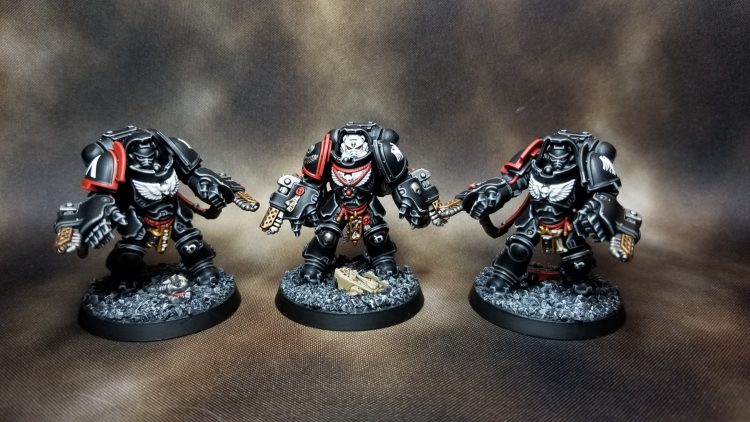
The List
Army List - Click to Expand D1: Patrol Detachment – Warlord 0cp Raven Guard Successor: Born Heroes, Whirlwind of Rage HQ Captain = 115pts Wargear: Combi Melta, chainsword, Jump Pack Relic: Teeth of Terra = free Warlord Trait: Rites of War Trait: Master of Ambush Master of the Trifold Path-1cp Troops 5 x Infiltrator Squad = 120pts Fast Attack 3 x Attack Bike Squad with multi melta = 165pts 3 x Attack Bike Squad with multi melta =165pts D2: Vanguard Detachment – 3cp Raven Guard Successor: Born Heroes, Whirlwind of Rage HQ Primaris Chaplain on Bike =115pts Litanies: Exhortation of Rage, Litany of Hate Extra Warlord Trait: Swift and Deadly = -1cp Extra Relic: Benediction of Fury = -1cp Elites 5 x Aggressor Squad, Flamestorm Gauntlets = 200pts Apothecary 75pts 5 x Bladeguard Veteran Squad = 175pts 10 x Vanguard Veteran Squad with jump pack, 9 x storm shields, 3 x thunder hammers, 3 x powerfists, 4 x lighting claws = 318pts 10 x Vanguard Veteran Squad with jump pack, 8 x storm shields, 3 x thunder hammers, 7 x lighting claws = 299pts Fast Attack 5 x Inceptor Squad with plasma = 250pts CP total: 12 – 1 relic, -1WL trait, -1 master of the trifold path, – 3 detachment =6cp 1997 point
The Standout Features
- A Space Marine list for the last of the year – really what else could it have been?
- The great synergy between the Raven Guard supplement and all the hits the new Marine Codex on show once again.
- An extremely A N G E R Y Smash Chaplain rather than the more conventional Master of Sanctity leads from the front with Swift and Deadly.
Why it’s Interesting in 9th
While plenty of other factions can put up great showings, Space Marines aren’t going anywhere, and this list showcases why. Vanguard Veterans, Plasmaceptors, Attack Bikes and Bladeguard are all units that can throw down with the very best options in their various roles in terms of raw efficiency, and are strong in pretty much any Marine build. What takes Marines to the next level is that you can then pick whichever of the supplements you think syngergises best with the particular configuration you want to use, and here Steven has picked the increasingly popular choice of Raven Guard. As we covered in our recent Start Competing for them, the Swift and Deadly and Master of Ambush warlord traits plus the Strike from the Shadows stratagem give you exceptional flexibility to pressure your opponent for the front half of the game. You can push powerful melee threats right into your opponent’s face, seed mid-table ruins with lethal Bladeguard, and force your opponent to be incredibly cautious until you’ve blown all your reserves. Running as Successors lets all the melee threats hit even harder than normal, further discouraging your opponents from getting into a fight early on.
The Raven Guard tricks also unlock the option of bringing Flamestorm Aggressors along, which are a very spicy unit now they have baseline 12″ flamers. While the loss of double shooting sucks, they’re a good deal at 40pts each if you can reliably get them into range, and Raven Guard basically do that for free. Being able to unleash a torrent of flamer shots in tactical both shores up horde matchups and is exceptional against many top tier armies, and Born Heroes makes them lethal in melee too. All told, they’re a great unit when they have the right support, and being able to use them extremely effectively is a genuine asset for Raven Guard. The other huge thing the Supplement brings to the table is how much it charges up a bike Chaplain – Swift and Deadly is the perfect warlord trait to stick on one of these, letting both the model and the Vanguard Veterans around them do a plausible White Scars impression, and you can either charge them up as a Master of Sanctity or (as here) spec them for pure violence. Making good units great is at the heart of many successful competitive strategies, so it’s no surprise to see it working here.
That’s kind of all there is to say here – the rest of the units in this list are going to be familiar to anyone who’s been following this column since the Space Marine Codex released, as they’re kind of the cream of the crop. Nevertheless, if you’d asked someone three months ago whether we’d be talking about Raven Guard as big movers and shakers at this point they’d have laughed you off, so it’s great to get another demonstration of how people trying out and, yes, innovating can shift the metagame!
What Have We Learned?
So that brings us to the end of list reviews for the year. By my count, I’ve reviewed 126 singles lists and 8 teams lists since this column started, covering very nearly the whole gamut of factions (RIP pure Thousand Sons and Craftworlds) and watching things change and shift as the new releases for 9th started to kick in. Part of the point of starting this column, of course, was to look at what made 9th lists tick, and how things differed from what we were used to in 8th Edition. With that in mind, to finish up the year, lets reflect on the key lessons that players should be taking in to 2021.
9th is a Significant Change from 8th
During the preview cycle for 9th Edition, a lot of people felt like it was going to end up as something of an “8.5 Edition”, because many of the things that were changing felt pretty minor when taken alone, and people thus assumed many of the same lists and archetypes would dominate. As it turns out, however, when you change a lot of things a little bit they add up, and once all the moving parts of 9th come together they create a distinctly different (and I think vastly more interesting) set of list building incentives and challenges on the table.
Melee is Vital
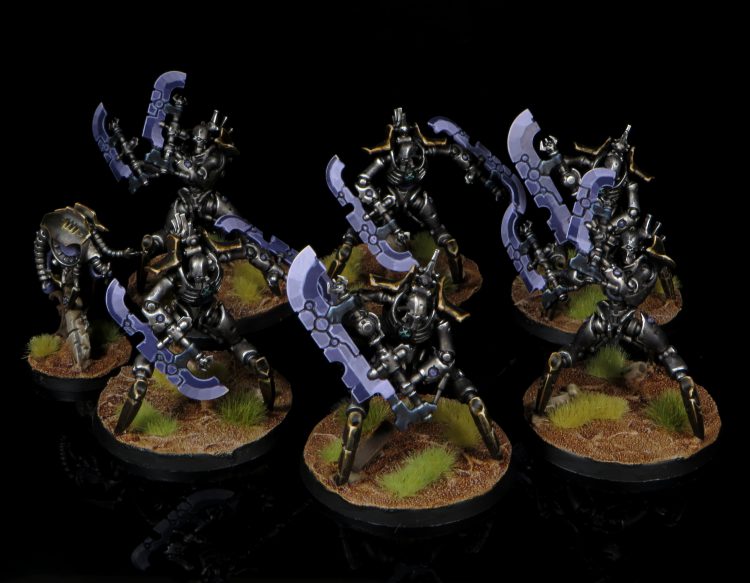
Effective use of the fight phase was at the heart of many successful strategies in 8th, but it wasn’t a mandatory part of building a good list, and building around it forced you to play to very specific goals such as rolling wraps and traps. 9th’s primary scoring, smaller table size and shorter game length come together to make it vastly more important for lists to be able to participate in the Fight Phase while massively opening up what that participation can look like. With only four scoring turns to make up 45 primary points it’s critical that you have some units that can, in an emergency, muscle onto an objective and kick enemy units off it right away – but it’s also fine if that’s all those units do. Many players thought melee was weak in 8th, and it absolutely wasn’t, but you were pretty much obliged to go all-in on fight phase movement and trapping shenanigans to get the most out of it, whereas now you can (and should) put melee units in your list just as aggressive damage dealers and objective stealers.
This also gives a major knock-on boost to “all-rounder” units like Terminators. 8th tended to reward extremely specialisation and optimisation for a single role, but in 9th, especially with smaller armies, having a unit that can be used flexibly is an active upside.
The Role of Characters Has Changed
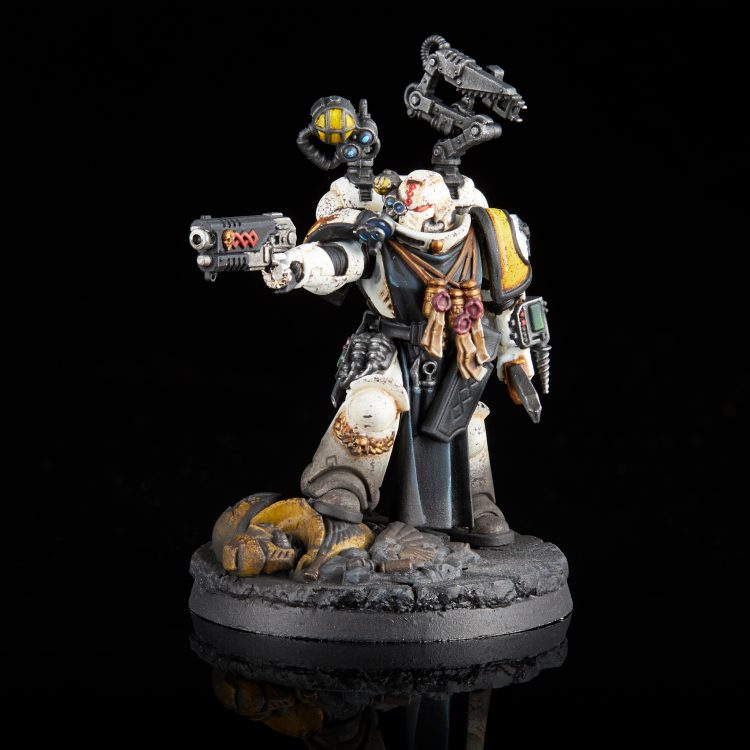
Herohammer as we knew it in 8th is dead in 9th. Honestly? Good riddance. Between incentives to pack your lists with HQs and the ease of screening characters, many 8th Edition lists leant on multiple strong characters as a key part of their damage dealing strategy, able to dominate a flank with relative impunity as long as the rest of their force stayed between them and the enemy’s guns. The change to Look Out Sir plus the new army construction rules have put that firmly to bed. Powerful, murderous characters can still be an important part of lists (just look at the Raven Guard Chaplain above), but they’re generally a smaller part and need to be much more integrated with the rest of your army. Not being able to change relics, psychic powers and warlord traits game-to-game also reduces how flexible they are as tools, meaning it’s much more important that you have a clear, consistent plan for how you’re going to use them.
That doesn’t mean that characters no longer matter though, far from it. With melee units that can smash the opponent off objectives more important than ever, characters that can apply powerful boosts to their damage output for a key turn are still highly valuable – but that’s not really new. What has seen a significant increase in importance compared to 8th is the use of Auras that boost defences, mobility and objective control capabilities. Whether it be the Mad Dok’s wound prevention bubble, the Tech Priest Manipulus’s speed boost or the exceptional Rites of War warlord trait, armies with access to abilities like these now pack them in as a priority – 9th wants you to get to the mid table, take the objectives and stay there. You also see a corresponding huge increase in the use of relics and traits that boost aura radiuses (e.g. the Book of St. Lucius), as being able to extend the radius of defensive auras generally does more to improve their utility than for offensive ones.
Planning for Secondaries is a Must
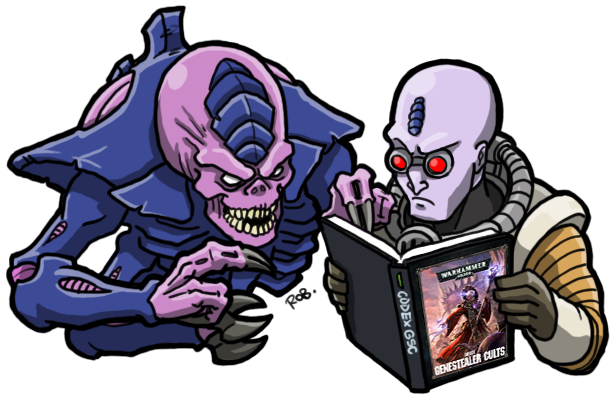
9th’s Secondaries are much more challenging to consistently maximise than ITC and Nova ones were in 8th, and also have a much stronger skew towards “proactive” options that you need to drive, rather than just reacting to what’s in your opponent’s army list. That means you need to be thinking about how you’re going to ensure you can always achieve a good secondary score during list building, which in many cases translates to having units dedicated to making sure you can always score Deploy Scramblers. This innocuous-looking Secondary has become a vital part of the competitive game simply because it’s by far the easiest to achieve if you plan for it. Small, non-character infantry units that can naturally deep strike are thus substantially more valuable than they were in 8th, and are a fixture of most lists.
The flipside of this is that being vulnerable to one of the “kill” Secondaries is a major drawback for a list, and something to be avoided where possible. If I’m honest, this is something that I’d like to see shaken up when/if we get a new iteration of the mission pack, as right now giving up maximum points on even one of them is a significant enough downside that it’s warping the metagame a bit, and disproportionately hurting factions that can’t work around them easily.
A Wider Range of Units Are Useful

This is one of the things I’m enjoying the most about keeping track of the evolution of competitive 9th. The factors we’ve looked at thus far combine with the missions not punishing small units with kill point/kill more primaries (in the way most 8th competitive missions did) to mean that a vastly broader range of units can be deployed in serious lists, and there’s also much more scope to come up with a new spin on successful factions because of it. There are still, generally, some clear “best” units in each faction, but the tier two of units that can be effectively used in the right list is massively, massively deeper than in 8th, where really only the meanest, nastiest and most optimised units got any airtime. If you’ve got some favourite units that were stuck on the shelf for all of 8th, now’s the time to dust them off, check out their rules, and see whether you can put together a build that gets them on the table.
The Weaker Codexes Need Some Help
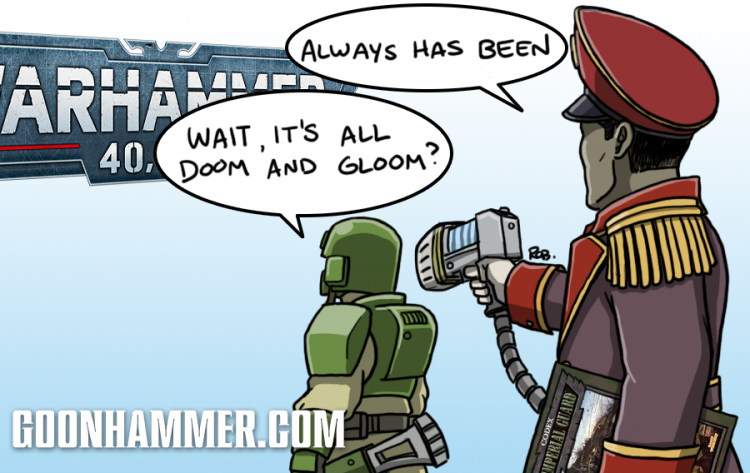
Most of my impressions from covering 9th work out to be positive, but there’s one downer note that I think we do need to talk about, and it’s something that I’m really hoping GW will look at in the new year.
While the drop-off in unit quality and usability in 9th is much shallower than in 8th, there’s a much sharper cliff-edge of viability for the Codexes themselves. 9th’s missions create a very focused set of incentives, and bluntly some factions as they stand can’t really hack it. Whether they can’t participate in the Fight Phase, don’t have the durability to stay on objectives, or are just labouring under the weight of an outdated codex that just can’t compete with books containing Rites of War, the factions that are bad in this edition are bad.
We don’t know exactly what the book schedule next year is going to look like, but my hope is that some of the factions that are currently struggling are either near the front of the queue after Dark Angels/Drukhari or get some interim boosts added prior to that. We’ve seen GW do this already in this edition with the Marine PDF Indexes, and I think any of the factions currently stewing in tier 4 or trash tier (and maybe some of the lower-end tier 3 factions) would benefit from some sort of mini update to tide them over. This doesn’t need to be massive – as we’ve seen from Genestealer Cults recently, a change as small as improving the statline of a single gun can substantially open up the viability of a faction. Just some one-page PDFs adding a handful of strats, relics and traits (similar to what happened at the start of 8th) would go a long way, and I hope it’s under consideration. The metagame looks pretty healthy as a whole, but it’s always important to remember that the investment involved in building an army is considerable, and some people can’t just change armies if they suddenly find themselves in trash tier for a year. 9th’s Codexes and new rules are fantastic, and I think Tau should be allowed a little bit of that goodness early, as a treat.
Wrap Up
…and that’s a wrap kids. Merry Christmas, and Competitive Innovations will return in the new year. Comments, questions and suggestions to contact@goonhammer.com.
